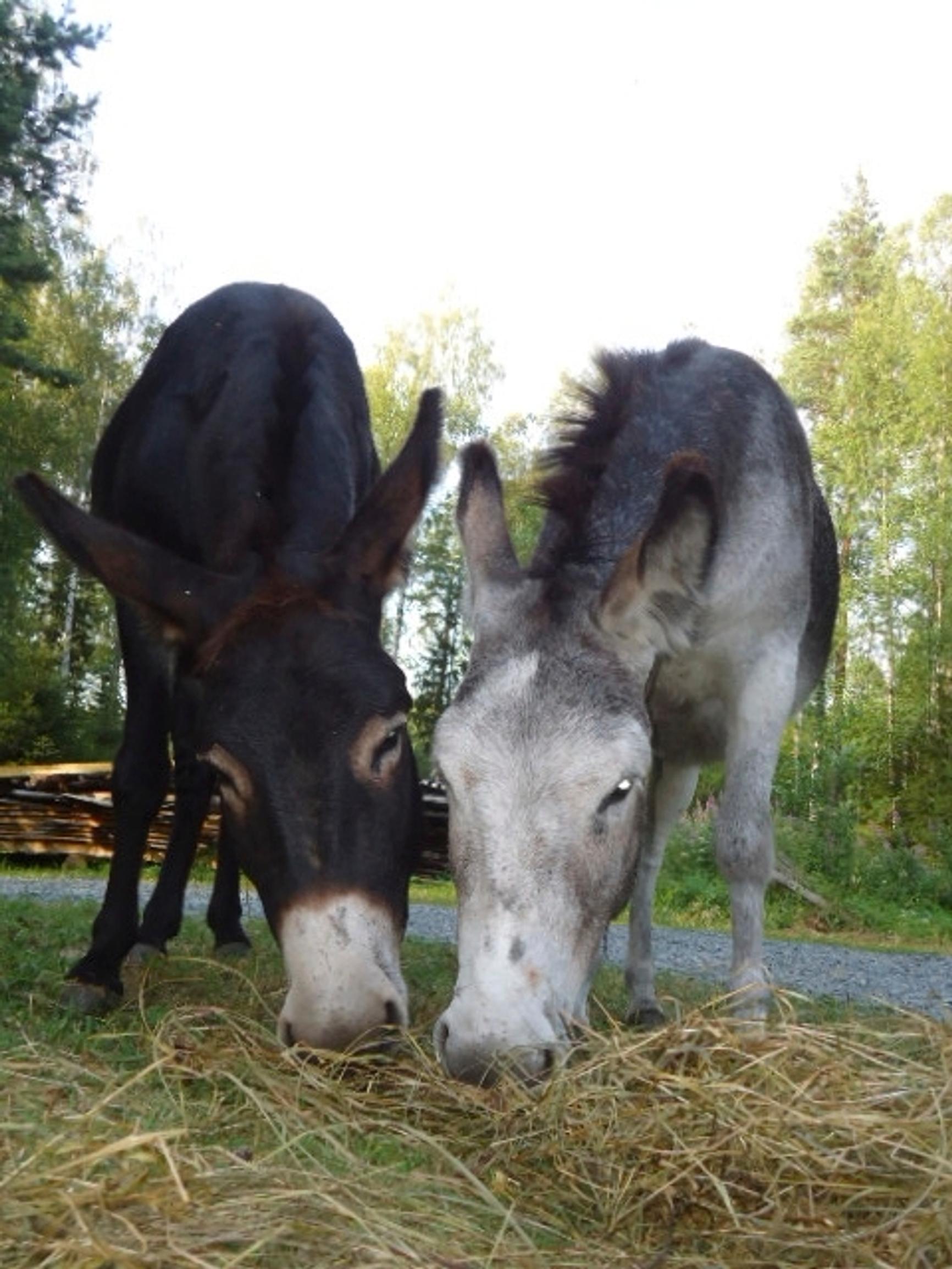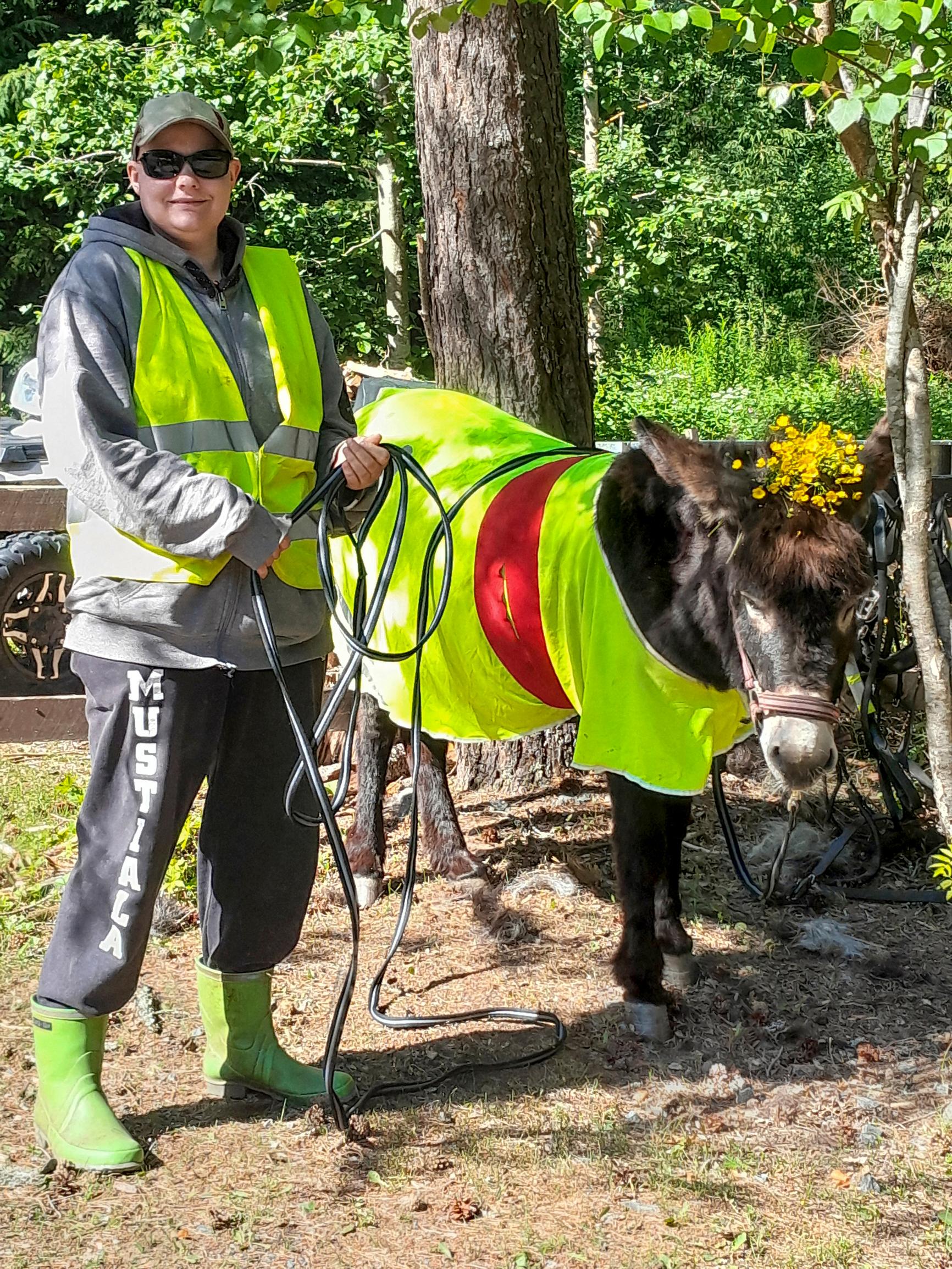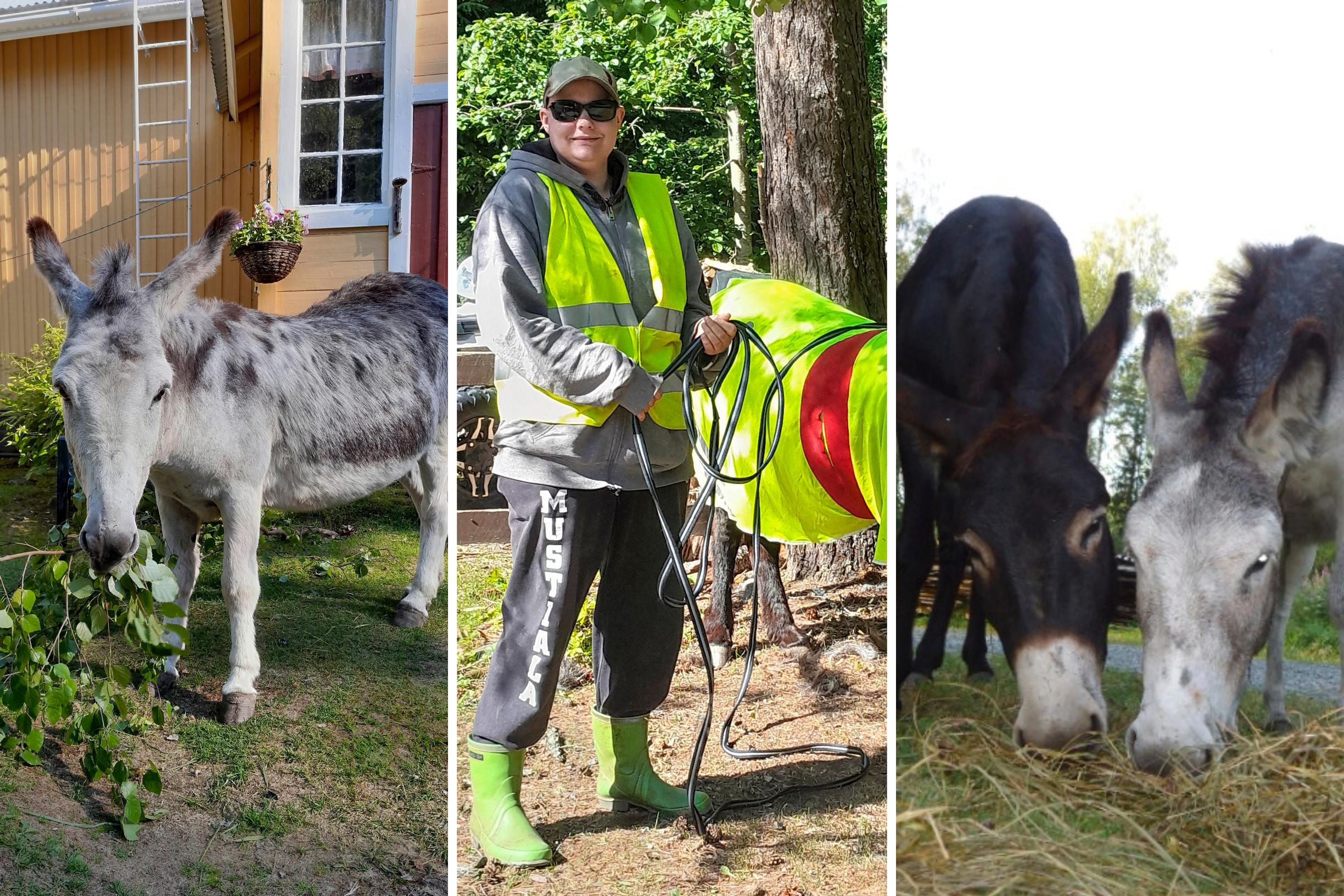
Cottage life with two donkeys: “You can share your worries with them, and they won’t spread them around”
If Virve Oksanen had her way, she would live permanently at her family’s cottage with her donkeys. Fortunately, that is her day-to-day life for half of the year.
My sister Anniina and I each have our own donkeys, Ukkonen and Jylinä. They ended up with us by chance a little over ten years ago. I was already fascinated by donkeys about ten years before that, when I was searching for a new riding instructor to replace my old one. I visited a Norwegian fjord horse breeding farm that also had donkeys, and I was immediately smitten.
A horse is a flight animal, so it’s always alert or on edge. A donkey, however, is quite different. If something frightens it, it won’t flee—rather, it tends to investigate what it fears. Yet donkeys are calm and gentle, and nothing is more adorable than a donkey foal. When it’s born, it’s all legs and ears.
Ukko and Jylle first came to us for weaning in 2011, when they were just a year old. We cared for them all summer at our parents’ cottage in Tammela, Southern Finland and a couple of years later we bought them. Jylle is mine, and Ukko is Anniina’s.
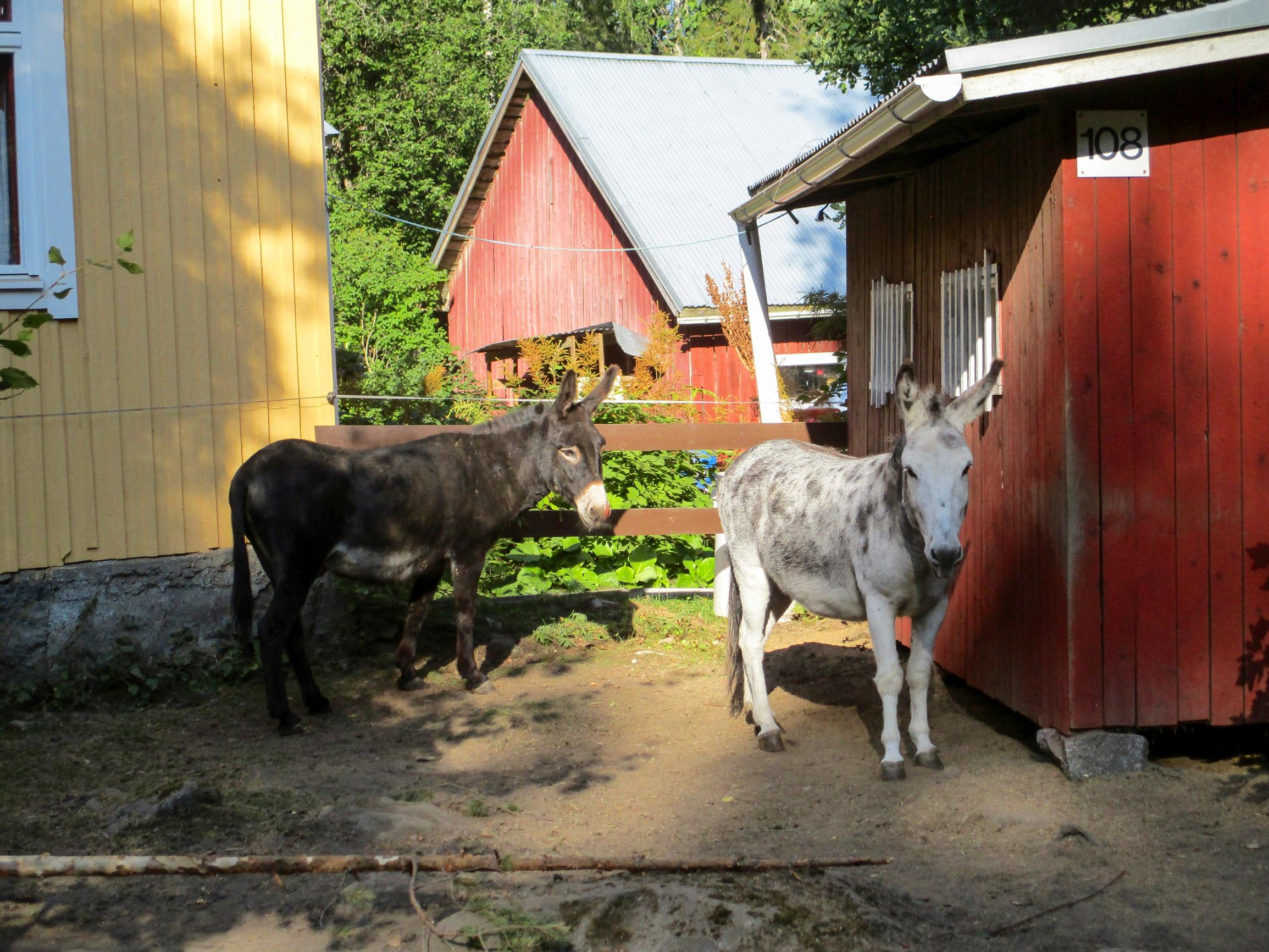
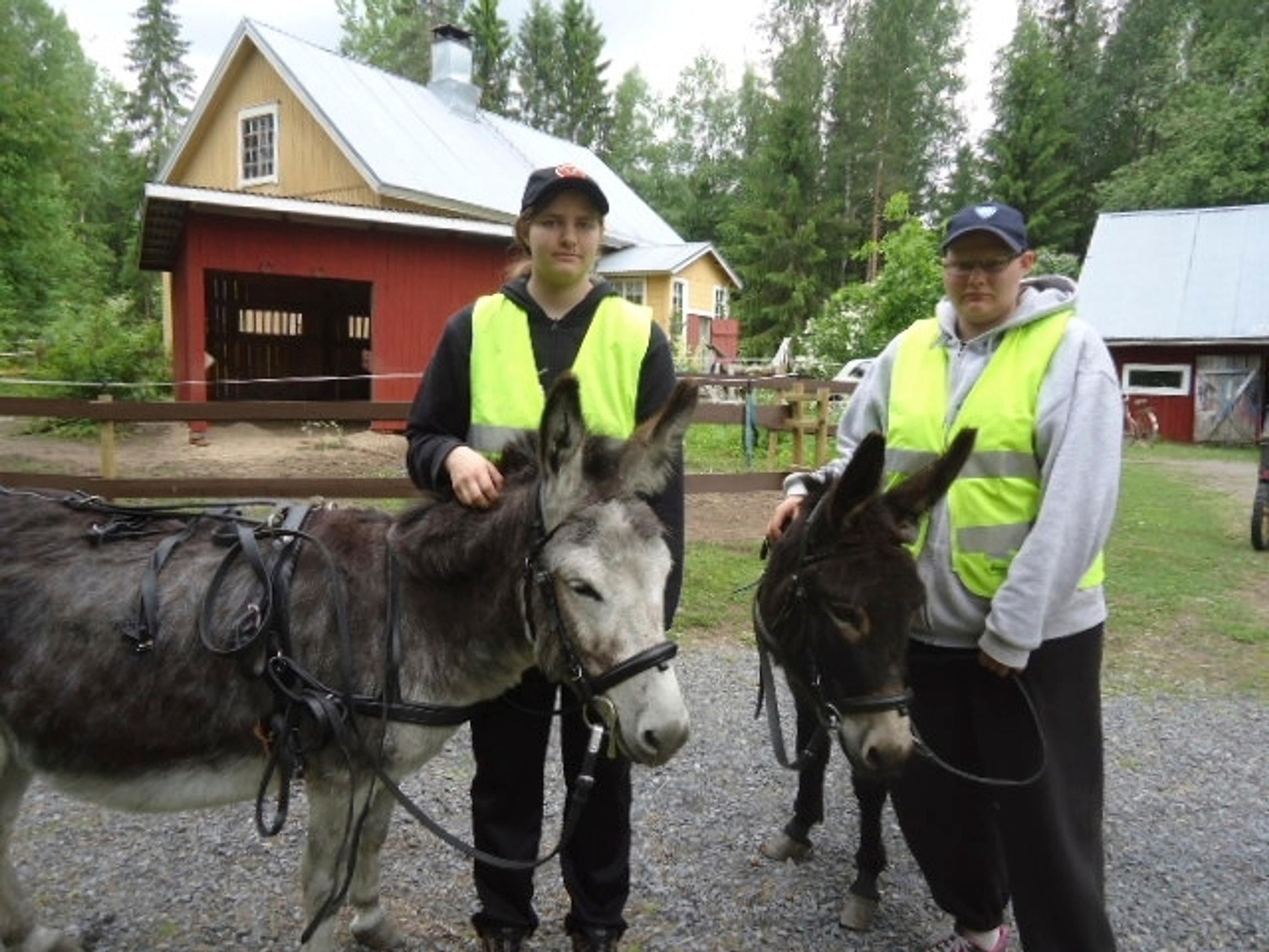
During the winter, the boys stay with their breeder, who is a bit over ten kilometers (about 6 miles) from our home in Forssa. We visit them two or three times a week.
When the ground thaws in spring, I set up a paddock with posts in the cottage yard. Then I pick them up from the breeder and move to the cottage with them for the summer.
Our cottage is an old forest farm. Its logs were hauled to Särkijärvi in the winter of 1920–1921. Along with the main house, we have a woodshed, several storage sheds, a grain-drying barn, a hay barn, and a sauna. It’s wonderfully peaceful, with the nearest neighbors far off.
If I had my way, I would live at the cottage year-round. As it stands, I’m there all summer and on winter weekends. I arrive Saturday morning to a chilly main room and head home again on Sunday evenings.
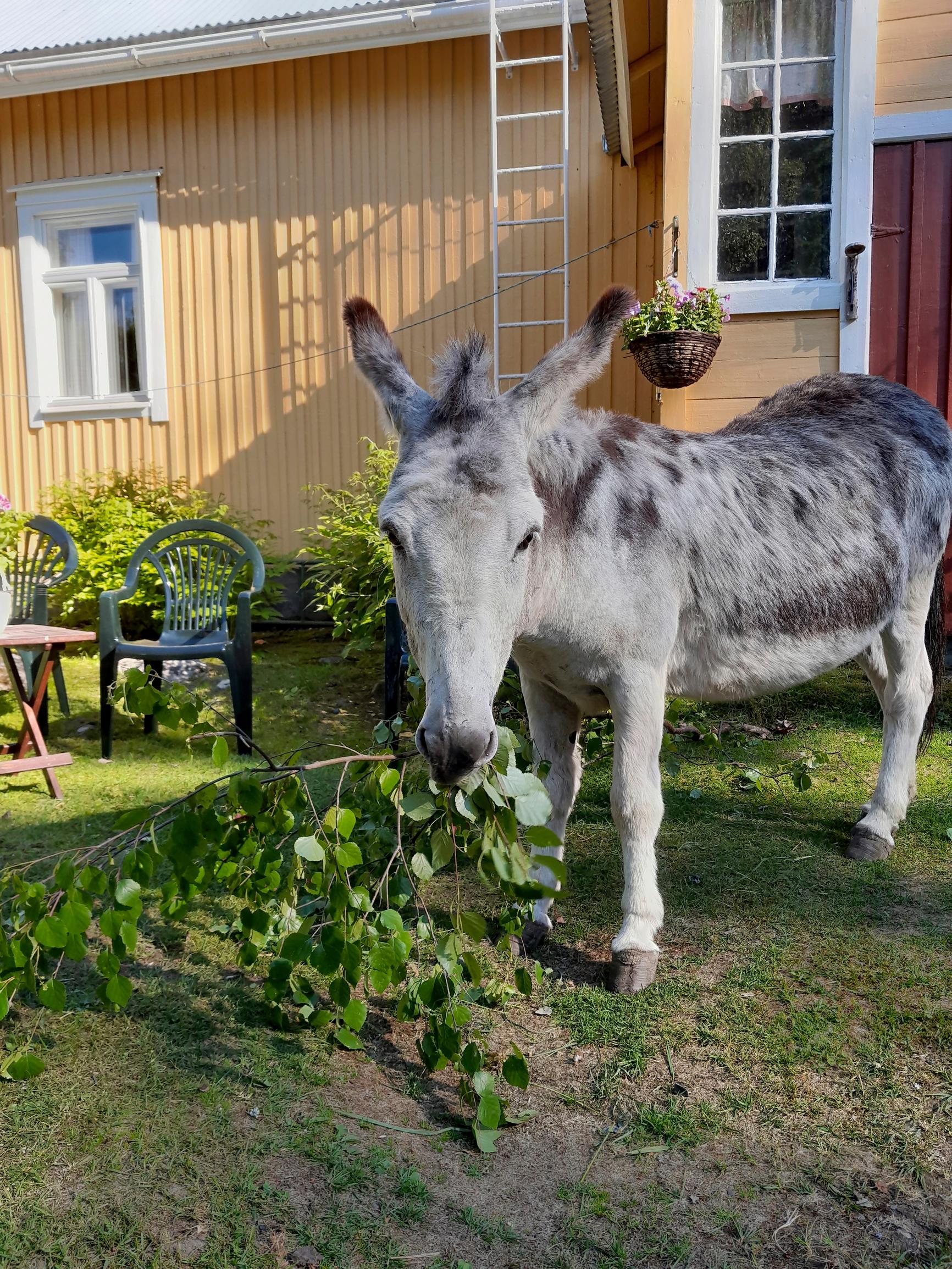
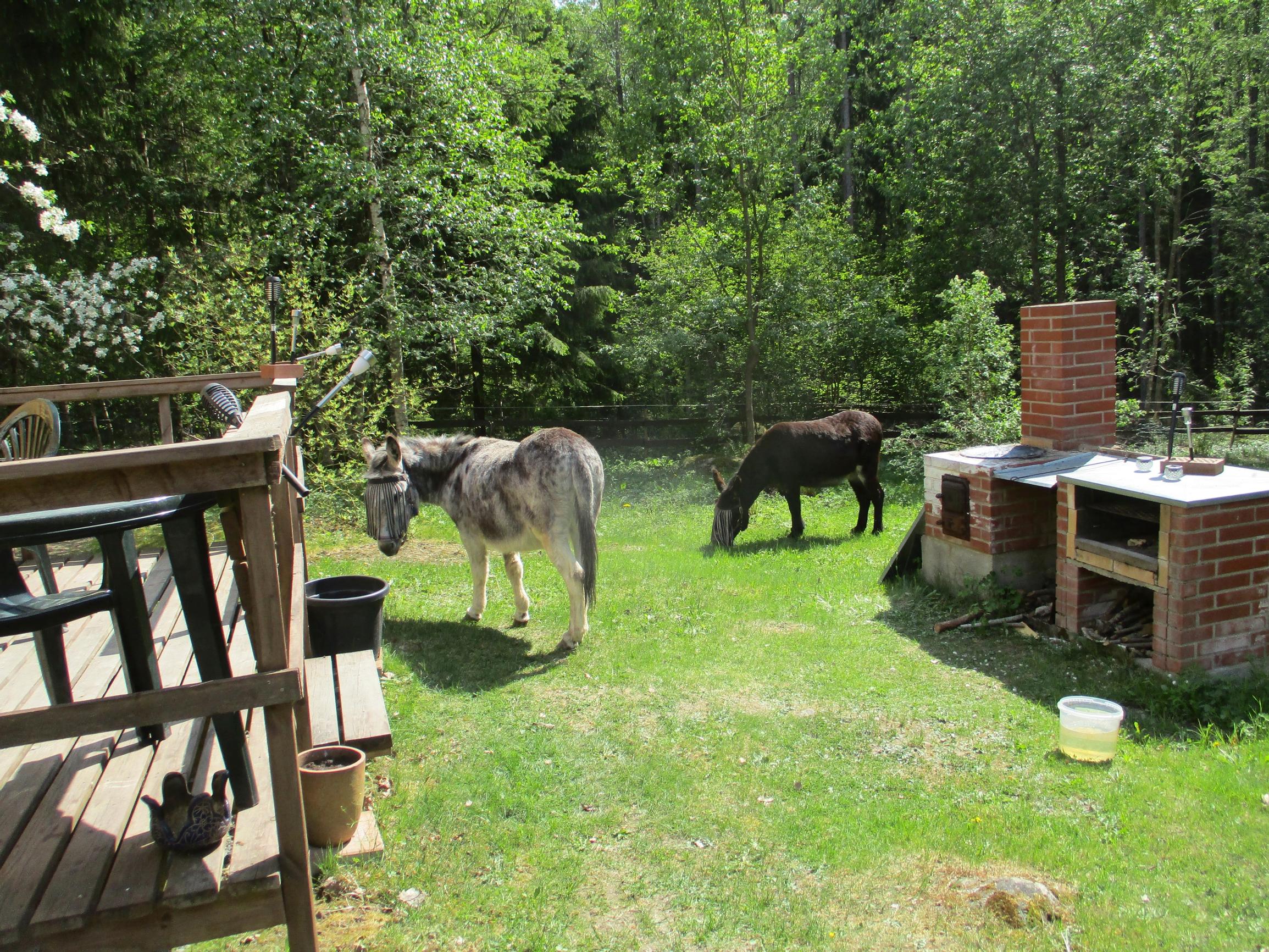
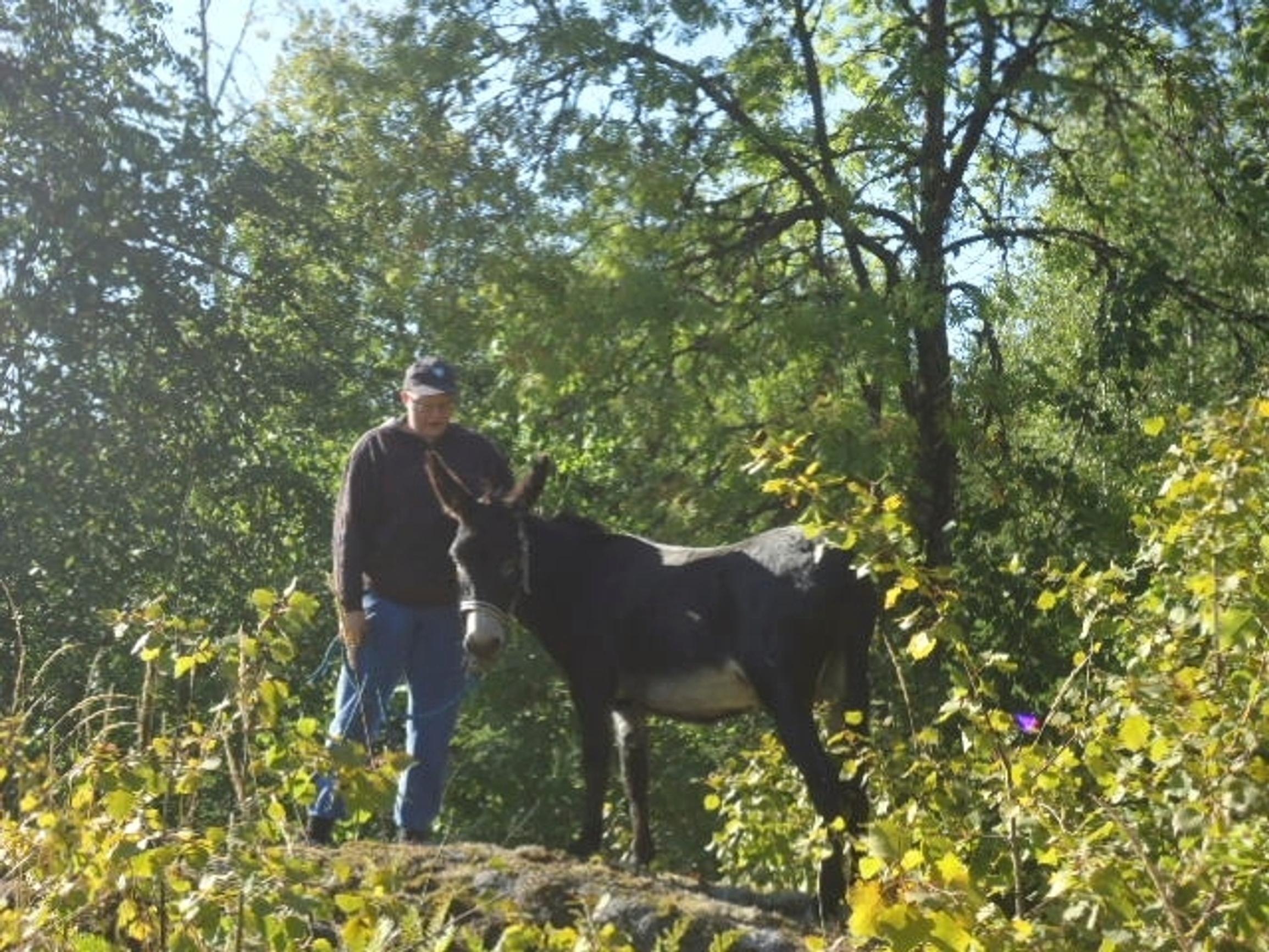
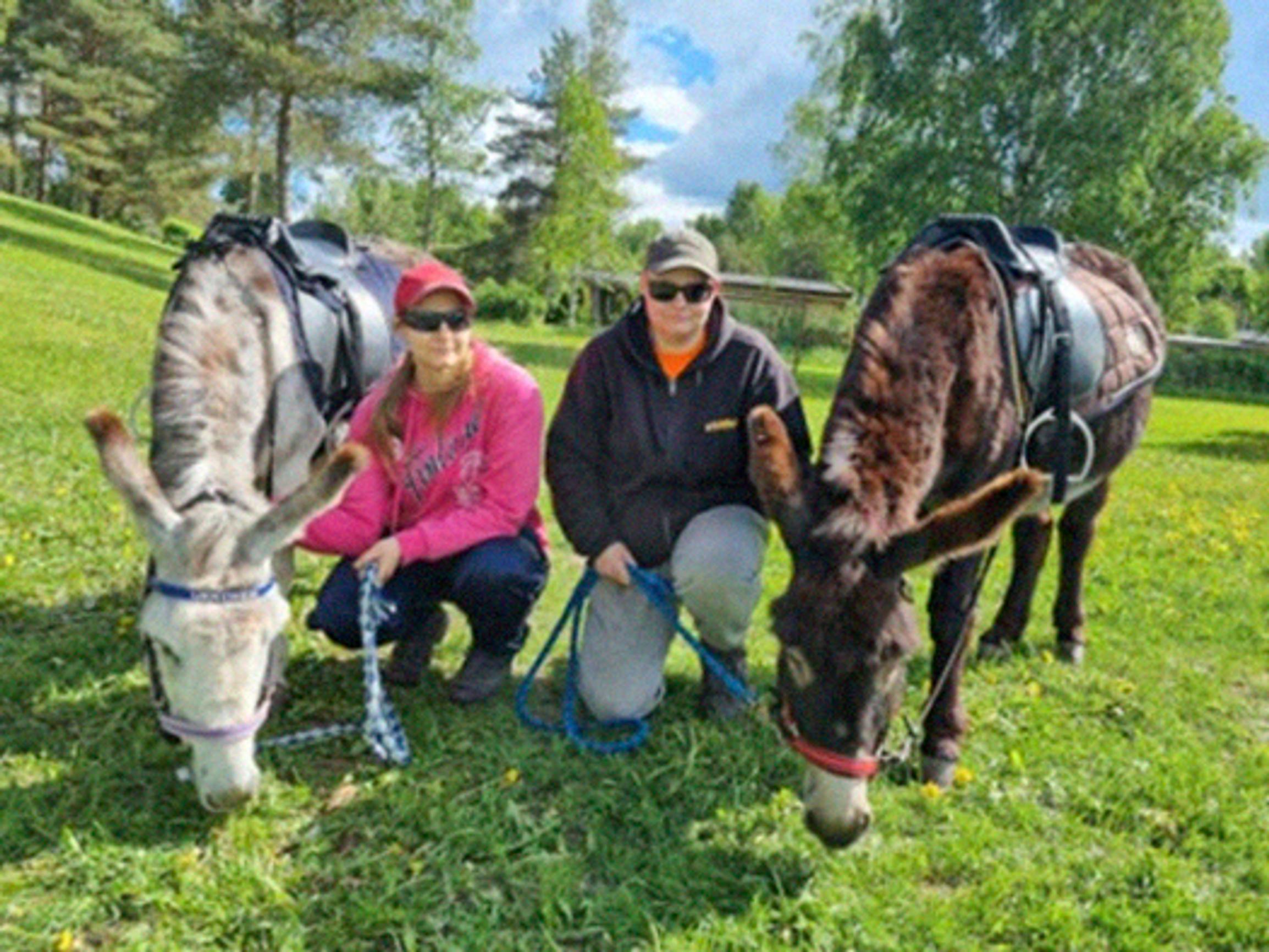
The donkeys live under a shelter beside the cottage. If they panic in the middle of the night, I can hear them from inside. At six in the morning, I take the boys to a fenced pasture or a small wooded area, where I already set out their dry hay the day before. When I come home from work, I bring them into the yard and give them their evening meal before having my own dinner.
By nine in the evening at the latest, I guide them into their enclosure for the night, where they get their hay. After that, I set up the next day’s straw net. If rain is forecast, I’ll drop the straw under the shelter. On rainy days, the donkeys refuse to step outside and simply munch away in the dry.
Donkeys are fantastic at keeping the forest in good shape. They’re also brilliant psychologists: you can share all your worries with them, and they won’t let them slip to anyone else.
When autumn arrives and grazing season ends, leaving the paddock empty, I feel empty, too. Something important is missing.
